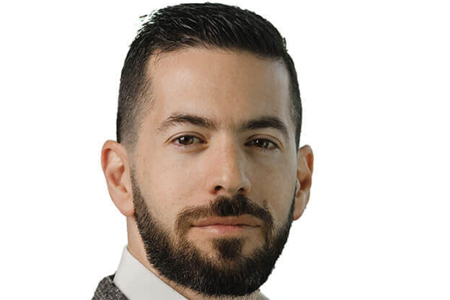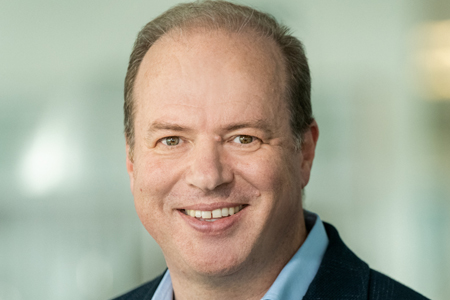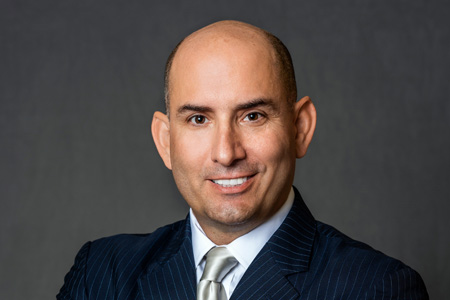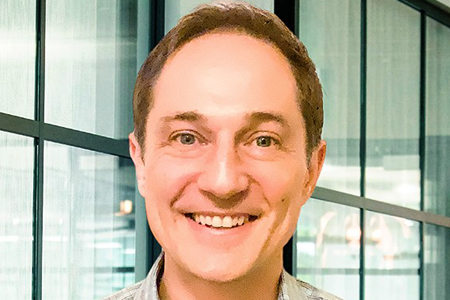Finance And Funding Outlook 2024: Additional Responses
By Ben Comer, Chief Editor, Life Science Leader

Life Science Leader received far more biopharma industry executive responses to our 2024 finance and funding outlook questions than we could fit into the December print issue. The responses below provide a compliment to the magazine article, expanding the number and quality of perspectives on offer. Since the December 1, 2023 publication of the print outlook, the trend toward market improvement – at least in terms of the inflation rate and deal activity – has continued. However, an election year and an FTC spoiling for a fight with industry (among other things) will keep leaders on their toes next year.
What impact will the Inflation Reduction Act have on biopharma investing in 2024?
 Alexander Seelenberger, MBA
Alexander Seelenberger, MBA
CFO
Vincerx Pharma
I believe the biggest problem surrounding the IRA was the uncertainty overhang it was casting over the industry. Everybody was talking about it, but nobody knew exactly what it was going to end up looking like. Fortunately, we now know and the buzz around town is that it can be managed. So even though it is another profitability headwind for the industry - though great news for patients nonetheless - I believe its effect has been for the most part priced into the market. Notwithstanding, I do feel some investors are starting to include the IRA - and its exemptions - into the mix when analyzing their current and future investments strategies. Therefore, its impact going forward feels more like a potential investment reallocation within the industry than a variable that will structurally pull and keep money away from it.
What financial tools or strategies can biopharma companies use to stretch runways and keep the lights on until funding for the sector improves?
 Morgan Brown
Morgan Brown
CFO
Clene Nanomedicine
It has become increasingly clear over the past year that investor interest, especially in micro and small-cap companies, has become extremely targeted. Although many venture capital, private equity and healthcare investment funds have significant resources to deploy, they are very selective on new investments and are utilizing a significant portion of their available resources to fund companies in which they already have made an investment. As such, it is imperative that micro and small-cap companies modify existing strategies to focus their finite resources on the highest probability programs within their portfolio. No longer does a company have the ability to have broad and deep pipelines and fund all programs. Companies and management teams are having to make difficult decisions and, in some cases, only invest in a single asset/indication as opposed to diversifying across a broad spectrum. Companies are not being rewarded in today’s capital markets for the breadth of the pipeline, only the potential success of the nearest-term opportunities. Making these difficult decisions may result in programs being put on pause and/or restructuring within organizations. The goal of this strategy for a company is to continue to move the pipeline forward with assets that have the highest probability of success, while extending the runway and hoping that the capital markets will improve at some point in the future.
 Paul Wotton, Ph.D.
Paul Wotton, Ph.D.
Executive Director and Chairman
Rice Biotech Launch Pad
In today's market landscape, biopharma companies must demonstrate both creativity and adaptability to secure the financial resources necessary for their continued research and development, clinical trials, and commercialization efforts. One important aspect of financial adaptability is diversifying funding sources. One promising avenue for diversification is the utilization of the Advanced Research Projects Agency for Health (ARPA-H), a government initiative aimed at providing funding for biomedical and health research that ventures beyond the constraints of traditional research and commercial activities. Government funding, such as that offered by ARPA-H, is a pivotal resource for biopharma companies during this economic uncertainty. Recently, the Rice Biotech Launch Pad in Houston announced a $45 million award to pursue novel onco-therapeutics, the equivalent of a Series A size round, specifically directed toward development of a novel and intelligent implant to optimize immunotherapy. In periods of economic downturns or market turbulence, private investors may adopt a more cautious, risk-averse stance, making it difficult for biopharma companies to secure necessary capital. Government funding emerges as a reliable and stable source of capital, providing the much-needed financial support that allows these companies to navigate these challenges. This financial resilience, in turn, allows biopharma companies to extend their operational runways until market conditions become more favorable, ensuring that these vital research and development initiatives are able to continue.
What financing challenges or opportunities exist for preclinical or early-stage biopharma companies with innovative but complicated products, such as cell or gene therapies?
 Bernard Peperstraete, MD
Bernard Peperstraete, MD
Co-Founder and CEO
AcuamarkDx
The bar is unquestionably higher than it's ever been with complicated products, but there will always be opportunities for validated innovations that can unlock large markets. In our case, we’re working to make early cancer screening the standard of primary care – as easy as monitoring for lipids. Tech that can do this can exponentially increase the market size for liquid biopsy and reduce the emotional and economic burden of cancer by $300B/year. Our approach assesses methylation levels in the blood for early disease detection via cost-effective and scalable PCR-based assays. But other companies still struggle to make tech that provides both highly specific and highly sensitive data while at the same time maintaining industry-scale capability and adequate cost-effectiveness. ASCO data show that even the most advanced players in the space still trade one – or several – for the other, or just detect at later stages. Technologies that maintain the status quo, including diagnostics and therapeutics, add to healthcare costs while making only a minimal difference. What will be funded is technology that makes a meaningful difference for patients and slashes the economic burden of care. Where there’s differentiated best-in-class tech, large market potential, and significant patient impact, deal activity will continue to flow. Few will disagree that the IPO market will open again in the next few years. Investment in disease- and market-transforming private startup companies is a long-term investment game, allowing investors to keep building value away from the market turmoil.
How can biopharma companies “de-risk” R&D assets or other business functions to improve resource management?
 Dinesh Patel, Ph.D.,
Dinesh Patel, Ph.D.,
CEO
Protagonist Therapeutics
It is critical to constantly evaluate and prioritize R&D assets to strike an optimal balance of cutting-edge innovation and clinical development, leading ultimately to commercialization. Companies should consider these three strategies:
- Pruning: Picking the winners and phasing out the losers, i.e. adhering to the Darwinian principal, is a healthy discipline of de-risking and increasing the odds of success.
- Partnering: Joining hands with a Big Pharma is a great way to de-risk the program, and to validate the asset, the program or platform, and sometimes the entire company. One needs to strike the right balance between various parameters including the financial terms and the control and governance of the program and be assured that the pharma partner has excellent expertise and a long-term commitment to the program.
- M&A: The ultimate de-risking can come by being acquired by a Big Pharma. As a biotech, you did your best within your area of expertise, and a time may come when handing off the baton to a bigger and more experienced party is the right thing to do.
 Keith Murphy
Keith Murphy
Founder and Executive Chairman
Organovo
The opportunity cost of resources requires that we de-risk assets before running expensive clinical trials, but new technologies to do so are not being adopted quickly. Advances in technology have the potential to reduce overall cost by better directing resources to identify assets/molecules that are most likely to succeed. Animal models are used to predict clinical benefit, but the challenges of animal models are well established and tools such as genetic association and pathway analysis can only assist to a degree. The industry has been reluctant to adopt new approaches which are increasingly well-validated: 3D human tissue models. 3D human tissue models can add tremendous value, but executives have bet on poor technologies with limited initial proof, such as iPS cell-based models for non-genetic diseases. Moving forward, to de-risk R&D and improve resource management, biopharma companies should consider 3D human tissue models that provide sufficient data to identify, validate and test targets.
What impact will innovative new products – such as obesity therapies, Alzheimer’s and Parkinson’s disease treatments, new mental health drugs, or gene editing therapies, for example – have on the financial health of the biopharma sector?
 Todd Zavodnick
Todd Zavodnick
CEO
Dermavant Sciences
Last spring, Dermavant launched the first novel chemical entity approved in the U.S. in more than 25 years for adult plaque psoriasis. The market continues to reward companies for delivering innovative products, but a wider biopharma recovery is dependent on the market and how deep and long any prospective U.S. recession proves to be. Biopharma financial health is at a multiyear low given the lack of IPOs, the decline in valuations and reduction in successful private financings. There remains a material number of publicly quoted biotechs trading below cash. Of course, there have been huge healthcare successes of late, such as Ozempic (which has increased Novo Nordisk’s market cap astronomically) and the industry’s first approvals for Alzheimer’s drugs. These successes, however, have been mostly attributable to Big Pharma, and little has yet trickled down to public and private biopharma companies; the XBI recently reached a new five-year low. These Big Pharma successes could eventually impact biopharma more generally through increased mergers and acquisitions activity or via related breakthroughs by smaller companies, but that is going to take time. That being said, bankers, investors, analysts, and biopharma have their eyes fixed on January 1, 2024, as the start of a resurgence in outlook. Commentators see value in the biopharma sector and look to the resetting of funds’ profit and loss ledgers around the end of the year, which should be followed by more money being put to work.
Biopharma M&A is picking up at the end of 2023. Do you expect deal activity to continue to increase in 2024? Why or why not?
 Ben Taylor
Ben Taylor
CFO
Exscientia
We do notice deal interest growing again, and I expect this to continue for companies invested in future-oriented technologies and advancing differentiated drug candidates. The potential of AI in drug discovery and development is being increasingly recognized. Many large companies have realized that solving complex drug discovery problems may be better done externally – typically faster and less expensively – than trying to build in-house or acquire all the relevant capabilities and technologies needed. Strategic partnerships are also critical for smaller, specialized companies like Exscientia. For example, some clinical development challenges for our AI-designed drug candidates are better solved by or with partners who have that expertise already, as well as the infrastructure and footprint to conduct large clinical programs. For this reason, we collaborate with several major pharmaceutical companies including Sanofi, Bristol Myers Squibb and Merck KGaA, who bring diverse know-how and resources to our joint projects. That allows us to focus on those areas where we can have the greatest impact, while also maintaining a very lean infrastructure. In 2024, I believe dealmaking will continue as it ensures optimal utilization of strengths and resources of both parties and, if done well, will lead to faster, better, differentiating therapy and patient outcomes.
